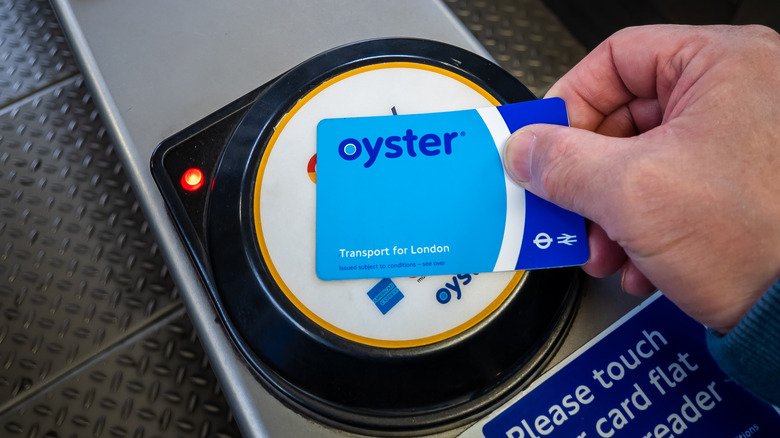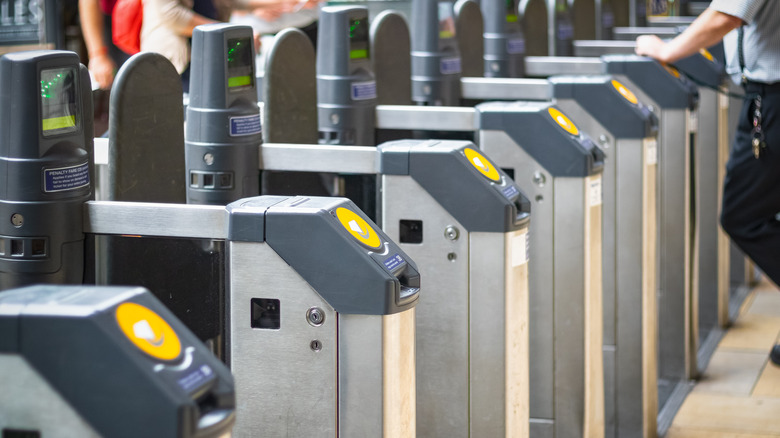Rick Steves Shares What Makes London's Intimidating Public Transit System Easy To Use
Navigating a new country's public transit system can be intimidating — especially when it comes to understanding the different routes and schedules. Throw in the challenge of potentially doing this in a new language, and you've got a recipe for the purest form of travel stress.
Whether you're worried about the ins and outs of navigating Europe's city bus system or deciphering train timetables that read more like hieroglyphics, the reality is that learning how to use public transport like the locals do can save you from overspending on taxis — and give you a more authentic travel experience — during your travels.
So, where do you start? Luckily, travel writer and TV host Rick Steves has pretty much seen and done it all when it comes to making his way in, through, and around some of the most popular European destinations. As such, the travel expert has plenty of tricks up his sleeve to help others navigate with ease. And when it comes to exploring the best of London, Steves' advice couldn't be simpler: Opt for using the city's convenient and cost-effective Oyster card.
How the Oyster card works
Put simply, London's Oyster card works like a prepaid smart card that allows you to pay as you go and receive direct access to various forms of transport in the city. All you need to do is purchase an Oyster card at one of the official stands or stations in the city for less than $10 (or buy a slightly cheaper Visitor Oyster card online), create an account to register your card, and then top it up using the app (or in-person at any Tube station) with the amount of money you'll use during your visit. Unsure of how much you'll be paying per trip? The Transport for London's (TfL) website has a full breakdown of fares to help you calculate that.
Once you're all set up, actually using the Oyster card to pay for your travels is even easier. Simply tap in and out of the station on the yellow card readers available every time you want to ride the city's public transport — and that's it!
From hopping on a local bus to using the Tube, tram, London Overground, and Thames Clippers River Bus services, having and using an Oyster card gives you direct access to pretty much every mode of transport you might need to enjoy your trip to London to the fullest — even if you're visiting the city on a tight budget. Back in 2017, Rick Steves wrote that he got as many as six trips with his Oyster card for the price of a single taxi ride.
Is it worth it getting an Oyster card during your visit to London?
Convenient and cost effective, Oyster cards are a great way to avoid constantly having to purchase single-ride tickets every time you want to hop on the Tube. Plus, considering that you're required to tap in and out of the station, it's also a lot easier to keep track of where your card is in comparison to, say, a tiny paper ticket. This also makes things a whole lot simpler if you're worried about looking like a tourist and making any mistakes that'll have locals immediately judging you.
That being said, between 2012 and 2014, TfL launched an even easier way to travel and pay for your journeys: contactless payments. Similar to paying with an Oyster card, contactless payments allow travelers to use their actual bank card or mobile phone's wallet app to tap in and out of transport systems and get charged for their trips at the end of the day. The main difference here is that, in this case, there's no need to purchase a separate card.
So, is it actually worth it getting an Oyster card while visiting London? Well, it all boils down to personal preference. To the more budget-conscious, Oyster cards are an easier way to track your spending and manage your transport budget. To the tech-savvy and make-my-life-easy traveler, it's probably best to simply stick to using contactless payments and avoid dealing with the hassle of buying a new card and topping it up.


